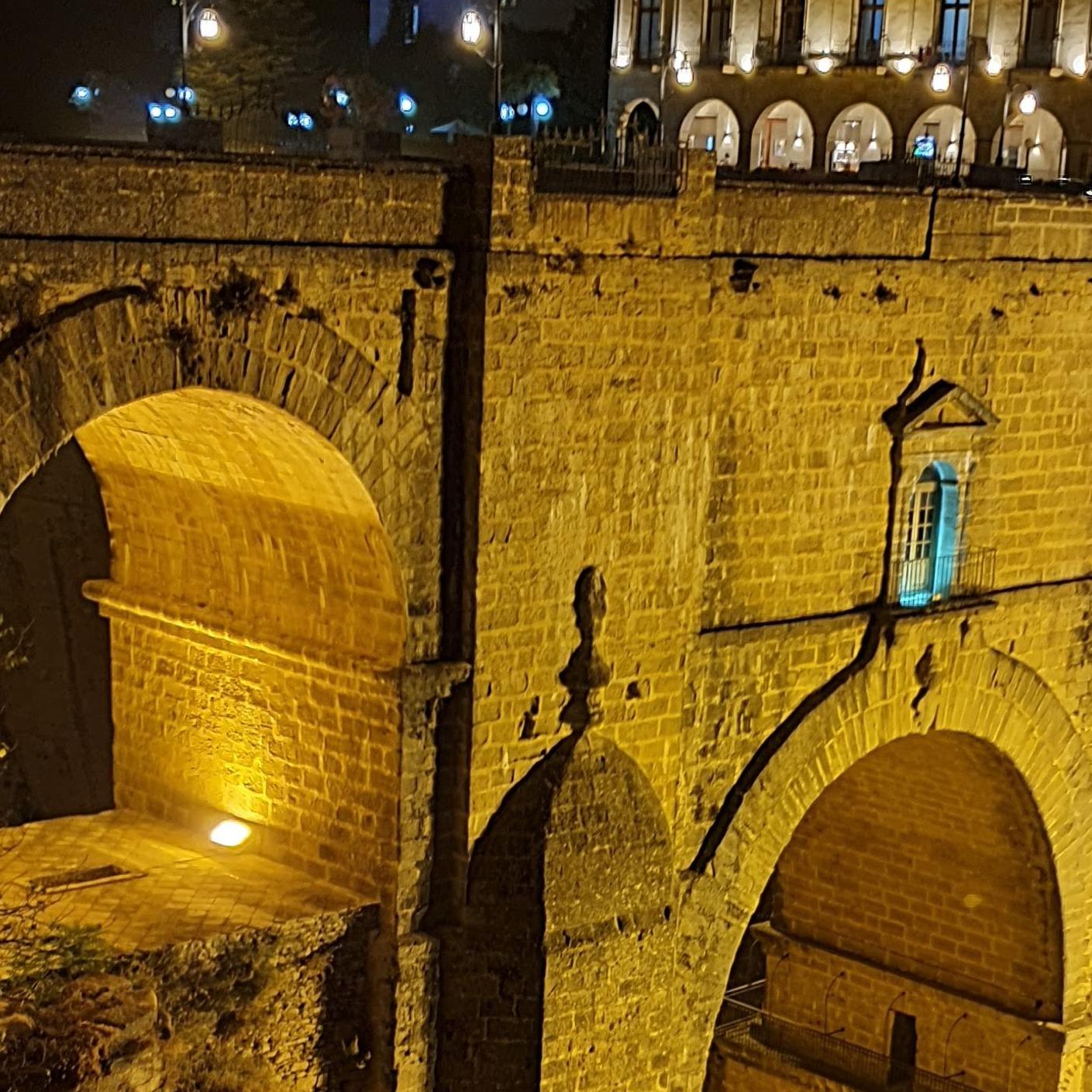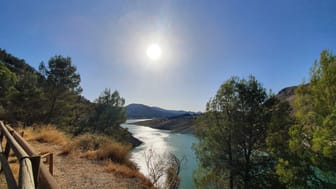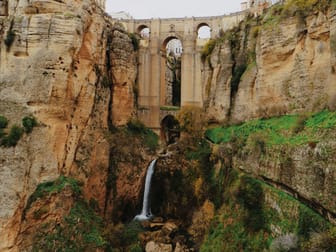Puente Nuevo


Ask ThatchGPT
Suggest a local expert to plan my trip
Suggest an unique itinerary for my Málaga trip
What foods do Málaga locals eat
What are some true hidden gems in Málaga
Help me brainstorm trip ideas for Málaga
Help me plan a family-friendly trip to Málaga
What people say
Pedro Pereira
Available for hire
"The New Bridge The first attempt to build a bridge on the site began in 1735, during the reign of Philip V, which involved the construction of an arch measuring 35 metres in diameter. However, six years later the arch collapsed, killing around 50 people.
A few years later, in 1751, new work began and was completed in May 1793, coinciding with the Royal May Fair in Ronda. The work was overseen by the architect José Martín de Aldehuela, originally from Manzanera, Teruel.
It was built using ashlar stone extracted from the bottom of the Tajo. Inside, above the central arch, there is an Interpretation Centre that not only discusses the 18th-century engineering work but also aspects of the region, such as urban planning, history, geology, flora and fauna. It is one of the two most emblematic monuments in the city of Ronda and, to some extent, also in Andalusia, Spain. This is a bridge built in the 18th century, impressive for its height (98 metres), which crosses the Tajo de Ronda, a deep gorge through which the Guadalevín River flows for 500 metres. The bridge is located at the end of the gorge, where it opens onto the plain to the west and southwest of the city.
The bridge is the newest and most imposing of Ronda's three bridges over the Guadalevín River, which divides the city in two. Its construction contributed to urban expansion, connecting the oldest part, in the southeast, with the Mercadillo neighbourhood, in the most modern part, to the northwest."
Read more in:
Mark Fedoronko
Available for hire
"The Puente Nuevo is the focal point of Ronda. The newest of three bridges traversing the gorge, it dates back to the 18th century. Seeing the towering bridge over the 120 meter deep chasm is a breathtaking experience. There are three main angles of the bridge you can get. The first will be from Miradores de Ronda and Aves. Located within a quaint park alongside the bullfighting ring, this will likely be your "first look" at the bridge. The second angle is from the other side of the chasm. You'll see a sign on a building labelled Mirador Aldehuela, which will give you another incredible viewpoint. The third angle is from the gorge below. This is the most challenging but unique view of the arches you will find. Requiring roughly a 1.5 kilometer hike virtually entirely downhill, you will begin the walk at the edge of town - Puerto de Almocábar. Once there, you will take a road that brings you into the gorge. From there, you'll be virtually unaccompanied with nonstop views of the town above, the cliff, and most importantly the bridge. If all these angles made you curious about the history, there is an interpretation center with exhibits discussing the history of the bridge with a small entry fee."
Read more in:
Dēzija Boļšaka
Available for hire
"Ronda is a mountaintop city in Spain’s Malaga province that’s set dramatically above a deep gorge. This gorge (El Tajo) separates the city’s circa-15th-century new town from its old town, dating to Moorish rule. Puente Nuevo, a stone bridge spanning the gorge, has a lookout offering views. New town’s Plaza de Toros, a legendary 18th-century bullring, is one of the city’s most recognizable landmarks."
Read more in:
Mentioned in these guides
About Puente Nuevo
Get the inside scoop on Puente Nuevo from local experts, travel creators, and tastemakers. Browse genuine trip notes, Puente Nuevo reviews, photos, travel guides, and itineraries from real travelers and plan your trip with confidence.
Save this spot for later or start mapping out a new trip today
Try our AI Travel Assistant and get instant answers to any questions about your trip.
Ask ThatchGPT


